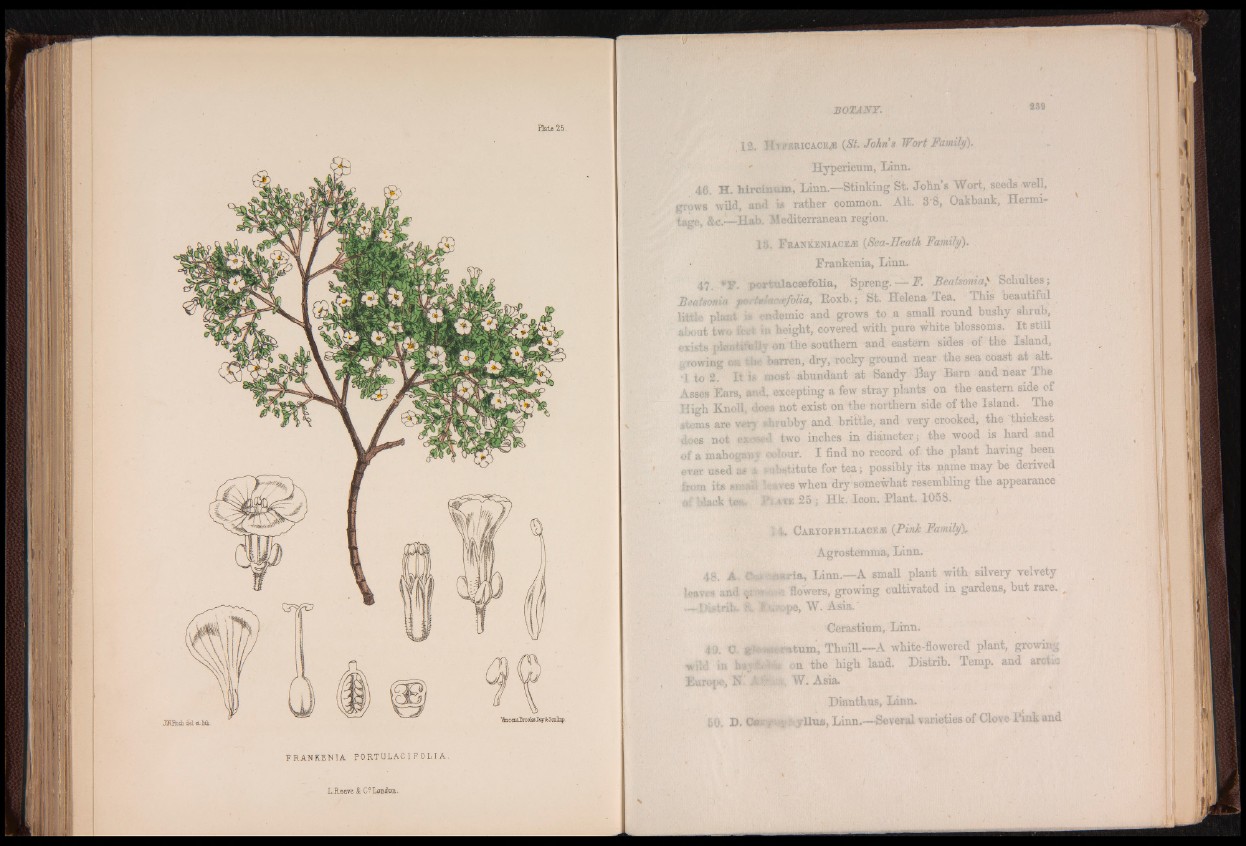
F R A N K E " N I A P O R . T U L A C I F 0 L I A .
L .R e e v e & C ° L û n d tm ,
,12. H t i ’KRIcac et e (St. Johns Wort Family).
Hypericum, Linn.
46. H. hirctmim, Linn.—Stinking St. John’s Wort, seeds well,
grows wild, and is rather common. Alt. 3 8, Oakbank, Hermitage,
&c.—Hab, '.Mediterranean region.
13. F e a n k e n i a c e .® (Sea-Heath Family).
Frankenia, Linn.
4?. * il. portalacsefolia, Spreng. — F. Beatsonia,v Schultes;
Beatsonw fortuUcafolia, Koxb.; St. Helena Tea. This beautiful
little plant a endemic and grows to .a small round bushy shrub,
about two f a t tut height, covered with pure white blossoms. I t still
exists plentifully on the southern and eastern sides of the Island,
growing o» the barren, dry, rocky ground near the sea coast at alt.
i to 2. I t is most abundant at Sandy Say Barn and near The
Asses Ears, and, excepting a few stray plants on the eastern side of
High Knoll, doe« not exist on the northern side of the Island. The
stems are very shrubby and brittle, and very crooked, the thickest
does not e >. d two inches in diameter ; the wood is hard and
of a mahog»«? colour. I find no record of the plant having been
ever used as * -mbstitute for tea; possibly its name may be derived
from its smai braves when dry somewhat resembling the appearance
of black tMk m 25 ; Hk. Icon. Plant. 1058.
: 4, Caryophyi,laces (Pink Familyb
Agrostemma, Linn.
48. A ©9*«Hj»*ria, Linn.—A small plant with silvery velvety
leaves and fWisawe flowers, growing cultivated in gardens, but rare. ;
. t>istrib- i&e W. Asia.
Cerastium, Linn.
40. O. ^ n m t a m , Thuill.—A white-flowered plant, growing
wild in feivm.-;:., on the high land. Histrib. Temp, and arcuo
Europe, N'. Afe;x, W. Asia.
Dianthus, Linn.
60, D. O s rjS f^ y lli» , Linn.—Several varieties of Clove Pink and